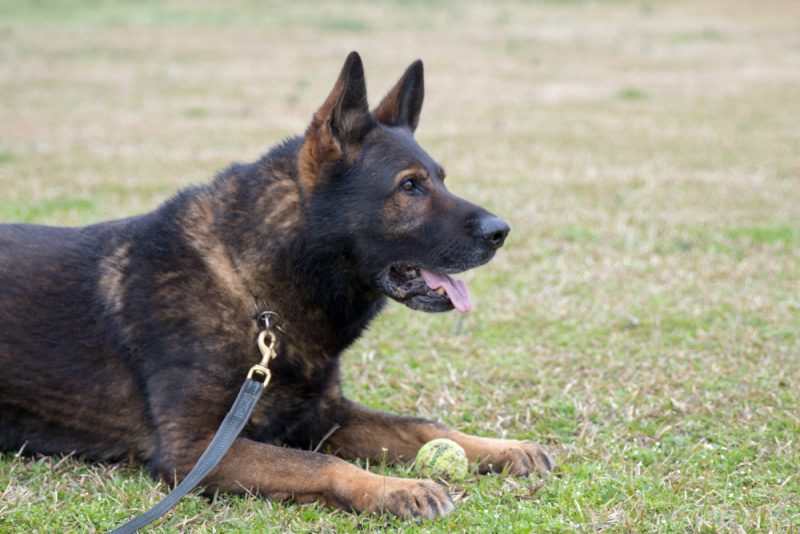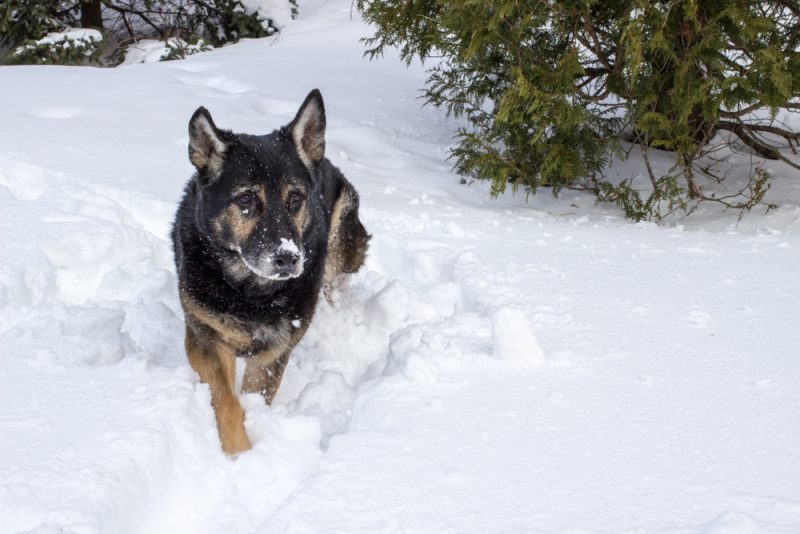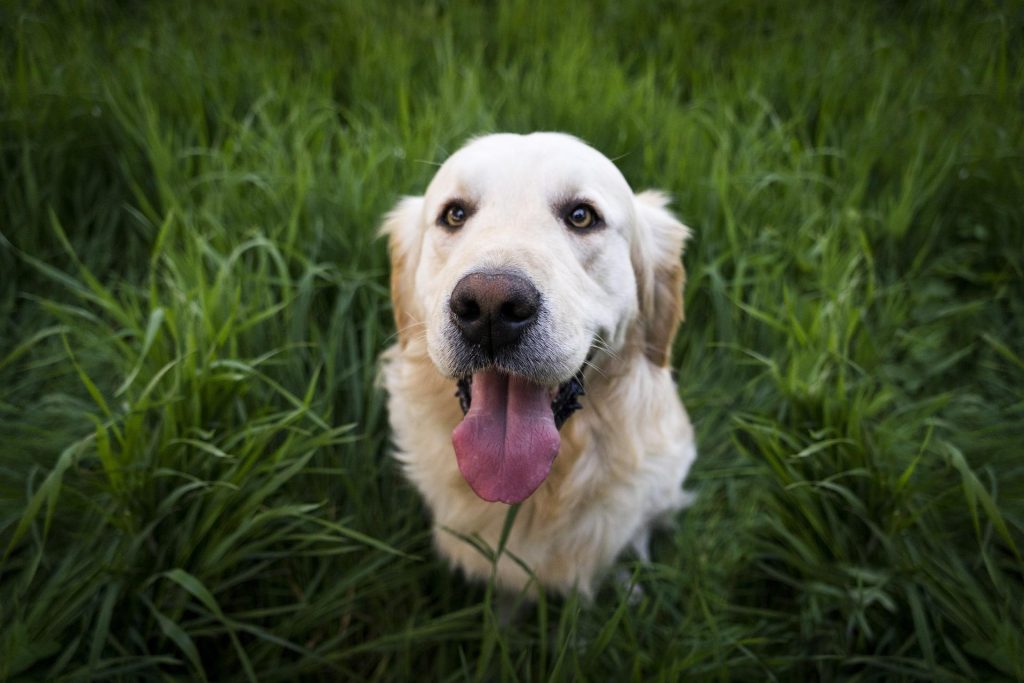The post Czech German Shepherd Dog Breed: Info, Pictures, Care & Facts by Matt Jackson appeared first on Dogster. Copying over entire articles infringes on copyright laws. You may not be aware of it, but all of these articles were assigned, contracted and paid for, so they aren’t considered public domain. However, we appreciate that you like the article and would love it if you continued sharing just the first paragraph of an article, then linking out to the rest of the piece on Dogster.com.
Click Below to Skip Ahead
Czech German Shepherds, more commonly just referred to as Czech Shepherds, are a subset of German Shepherds. They hail from the border between Czechia and Germany. They share a lot of the same characteristics as German Shepherds except they tend to be a little lighter in color, heavier in weight, and are more muscular.
Although rare, they are prized as close protection and guard dogs, but they can make good family pets with proper and ongoing socialization from a young age. They are highly energetic dogs, though, that need to be given plenty of physical exercise as well as mental stimulation. Read on for more information about this uncommon dog breed and to determine whether it is the right choice of dog breed for you and your family.
Breed Overview
Height:
24–26 inches
Weight:
50–90 pounds
Lifespan:
12–14 years
Colors:
Black, gray, brown, tan
Suitable for:
Experienced owners looking for an active, alert, loyal dog breed
Temperament:
Loyal, affectionate, smart, intelligent, athletic, protective
.breeds-overview { background: #f4fbfb!important; }.breeds-overview .breeds-overview__item p:nth-child(1) { color: #000000!important; }
The German Shepherd is one of the best-known and most popular dog breeds in the world and it is as popular as a working dog as it is as a companion dog. It is still used as a guard dog, police dog, and for close protection work. Although rare, the Czech German Shepherd is a subset of the German Shepherd and is generally used for protection work thanks to its loyal, protective nature.
As such, it is not recommended for first-time owners, and even experienced owners must ensure they provide enough mental stimulation, physical exercise, training, and socialization to ensure the breed is well-adjusted and behaves well around strangers.

Czech German Shepherd Puppies
Although the German Shepherd is a common dog breed, the Czech German Shepherd is much less frequently found. In fact, it can be difficult to obtain, which means you will have your work cut out finding a breeder that offers this unique subset. Speak to breeders and ask what types of German Shepherds they have.
It can be difficult to tell the difference between German Shepherds and Czech Shepherds when they are puppies, and even when meeting the mothers because breeding dogs are not usually as muscular or athletic-looking as their working counterparts. Because Czech Shepherds are somewhat rarer, some breeders may use this to try and get more money for their Shepherds so be sure to ask questions and carefully check the dogs before buying.
Czech Shepherds are rare, but they are bred as working dogs and for protection, which means they can end up in rescues and shelters when they are no longer able to breed or if a previous owner was unable to handle the potential aggression of the breed. If you do see one in a shelter, be sure to check its temperament and behavioral qualities with the shelter before agreeing to adopt it. You don’t want to get home and find you have an aggressive dog on your hands when you weren’t expecting one.
That potential aggression means that you will need to socialize and train a young Czech Shepherd as soon as you get it home. Although socialization should continue throughout a dog’s life, it is most susceptible to socialization efforts when it is still a young pup. Similarly, young puppies are more likely to take to training when they are younger, so training should start early too.
Czech German Shepherd Breed Origin & History
Czech German Shepherds share their early breeding line with other East German Shepherds. German Shepherds were originally bred as herding or shepherding dogs, but their hard-working nature and their somewhat imposing look meant they became popular with the armed forces across the country and into the then Czech Republic.
However, in the 20th Century, the Czech Army bred working dogs to patrol the border and in the 1950s when intentional breeding of this subline took off, it was the Czech Army that was primarily responsible for its development.

Temperament & Intelligence of the Czech German Shepherd Breed 
Czech Shepherds, even when kept as family pets, are all business. They are alert, astute, and intelligent, and they can be trained to perform a wide variety of tasks and roles. Historically, they were used to patrol borders and have been used for close protection and guarding work ever since.
As such, they can be wary of strangers, and without proper socialization, they can show some signs of aggression. However, with close family members, they are usually very loving and affectionate.
The breed is intelligent and can be easily trained by an experienced handler. This intelligence does mean, however, that the breed needs something to occupy its brain, otherwise it can become bored and may develop behavioral issues. If you value your furniture and your household items, you will need to provide plenty of exercise, playtime, and games to keep them busy.
The Czech Shepherd can get along with other animals in the house, although gradual introductions will help ensure this is the case. And you will need to take things very carefully when introducing the breed to cats.
The size, strength, and guarding instinct of the breed means that it might not do well in an apartment. It will want to alert you to the presence of strangers which in apartments can include anybody walking past as well as those living above or next to you. The breed is somewhat vocal, too, so you could end up with noise complaints from the neighbors closest to you.
If you have some land, this will also allow you to provide additional exercise for your dog, but you will need to ensure that the outdoor area is secured because the Czech Shepherd is an agile athlete who can find a way out of gardens that are not fully secure.
Are These Dogs Good for Families? 
The Czech Shepherd is a working dog breed, but it can make an excellent family companion with the right treatment and handling. It is loyal and affectionate, and it can make a great guardian and companion for children. You should never leave very young children alone with dogs, but the Czech Shepherd is robust and rugged, which means it can be understanding and forgiving of accidental grabbing.
Always teach children to be respectful around dogs, however, and ensure that your dog is trained to behave well around children. If you are in any doubt, contact an animal behaviorist or professional dog trainer and enlist their help with your training efforts.
Does This Breed Get Along with Other Pets? 

The Czech German Shepherd can be integrated into a household with existing pets fairly easily. It can also get along with dogs outside its own household, although early and ongoing socialization will make this process a lot easier, while gradual introductions will ensure your Shepherd gets along well with your other pets. This is especially true when introducing the Czech Shepherd to cats.
Cats tend to run, and this can lead to the dog giving chase. Introduce them slowly, giving your cat time to get used to having a big dog in the house, and always give your cat a clear exit and plenty of high perches where it can hide. Never leave a dog alone with smaller animals. Even if your Shepherd doesn’t intentionally harm the other animal, accidents happen, and the size and strength of the breed means it doesn’t take much to cause injury to small pets.

Things to Know When Owning a Czech German Shepherd
The Czech Shepherd is smart and intelligent, and it tends to enjoy training, as it has a working attitude. It gets along with children, integrates into a family unit, and will usually get along with other pets in the household.
However, the breed has been bred for protection and guarding work, which means there is the potential for it to be highly protective. This, coupled with moderate to high energy levels and exercise requirements, means it isn’t necessarily the best breed for all potential owners.
Food & Diet Requirements 
The Czech German Shepherd is a large subline of a large breed, and it is energetic. As such, it has a hearty appetite. You can feed wet food, dry food, or a combination of the two.
When feeding dry food, follow the feeding guidelines on the packaging, because different foods have different nutritional values and, therefore, different feeding levels. However, you can expect to feed around three full cups of kibble per day, which should ideally be split evenly across two meals.
If feeding wet food, use your dog’s weight and the manufacturer’s guidelines to determine how much food to give. No more than 10% of a dog’s daily calorie intake should come from treats, and if you do feed treats or use them for training, you should reduce your dog’s daily food intake according to the treats you give. Always ensure your dog has access to fresh, clean drinking water whenever it wants it.
Exercise 
The Czech German Shepherd is a working breed, and it has moderate to high energy levels. You should provide at least 60 to 90 minutes of exercise a day. This can include walks, but the breed will benefit from being given additional and more strenuous forms of exercise, especially those that engage the dog’s brain as well as its body.
Consider canine sports. The German Shepherd was originally bred as a herding dog, and many sports involve elements of herding that they can still excel at. Alternatively, get outside with a ball or toy and throw it around the garden for half an hour. You can also try agility courses, which you can set up yourself in your own yard. Flyball and other sports are also good options for this breed.
Training 
Canine sports are a good way to keep your dog mentally engaged, and so too is regular training. This type of breed not only accepts training but thrives on it. Early training will concentrate on things like potty training and teaching basic commands like sit and stay.
These commands can help encourage good behavior, too, and even discourage bad behavior. If your Shepherd tends to jump up when meeting people, getting them to sit and rewarding them for the successful completion of the command can prevent this behavior.
The breed has been used for everything from herding to protection work, with these tasks involving some independent thinking as well as more involved actions. Therefore, the breed can be taught more complex behaviors. Giving the Czech Shepherd tasks to perform will keep them active physically and mentally.
An important element of training any dog is socialization, and this is especially important with a breed like the Czech German Shepherd. Introduce them to new people, animals, and situations, starting when they are young but continuing throughout their lives. This will desensitize them to new situations and teach them that there is nothing to be afraid of and that you don’t need protection from people or other animals.

Grooming 
The double coat of the Czech German Shepherd does need regular care to prevent it from getting knotted and causing discomfort. This will also help control shedding so that you won’t have as much cleanup to perform. Brush at least three times a week throughout the year, increasing the frequency to every day during the heavy shedding season.
Trim nails every 2 or 3 months, or when you can hear them clicking on hard floors. Check inside the ears regularly, and, when brushing the coat, look for signs of injury across the body. Dental hygiene is a big problem for a lot of pet dogs, and because your pup can’t brush its own teeth, it will need your help.
Brush teeth at least three times a week. While dental treats and dental chews can help, they are not a replacement for regular brushing and routine dental checkups.
Health and Conditions 
Although the German Shepherd is a robust and hardy dog, there are some health conditions that this breed can be prone to. In particular, it is prone to elbow and hip dysplasia.
These conditions occur when the bones around the elbow or hip joint do not grow fully, or they grow out of position. Over time, as the bones develop and the dog ages, dysplasia can cause discomfort, pain, and lameness, and may develop into arthritis as the dog gets older. If you notice your Czech German Shepherd showing any signs of pain while moving around, have them checked over by a vet who may recommend X-rays and other checks to determine if this is the problem.

 Speak To a Vet Online From the Comfort of Your Couch!
Speak To a Vet Online From the Comfort of Your Couch!
If you need to speak with a vet but can’t get to one, head over to PangoVet. It’s an online service where you can talk to a vet online and get the personalized advice you need for your pet — all at an affordable price!
- Panosteitis
- Perianal Fistulas
- Hip Dysplasia
- Elbow Dysplasia
- Congenital Heart Defect
- Degenerative Myelopathy
- Hemophilia
- Von Willebrand’s Disease

Male vs Female
Male German Shepherds will usually grow a little bigger than females. Although training, socialization, and individual characteristics are more likely to determine the temperament of a dog, males can be more prone to aggression as well as being more likely to wander.
Females can be prone to mood swings, though, and they are not usually as affectionate as males.

3 Little-Known Facts About the Czech German Shepherd
1. They Used to Patrol the Borders with the Czech Army
German Shepherds were originally bred as herding dogs, but Czech German Shepherds are a subset of the breed that were originally used to patrol the borders of the Czech Republic, accompanying the Czech Army.
2. Czech German Shepherds Are Usually Bigger and More Muscular
As a subset of the GSD, the Czech Shepherd shares a lot of similarities with the main breed, but it is generally bigger and more muscular and athletic than the East German Shepherd which is more commonly seen and kept as a pet.

3. They Can Be Very Protective
The history means that this breed can be very protective of its humans. Early socialization and good training are essential to help ensure that the dog does not become aggressive.

Final Thoughts
The Czech German Shepherd is an intelligent breed that is a subset of the German Shepherd breed. It is rarely seen but while it has a history as a guard dog and close protection dog, it can make a loving and loyal family pet. If you are considering one, you will need to provide lots of socialization and training from an early age.
The breed does require moderate to high exercise levels and that double coat also means that the breed has moderate care requirements. You will also benefit, as a family, from giving the dog tasks to perform that will keep it mentally active, as well as physically.
Featured Image Credit: Jess Whitney, Shutterstock
The post Czech German Shepherd Dog Breed: Info, Pictures, Care & Facts by Matt Jackson appeared first on Dogster. Copying over entire articles infringes on copyright laws. You may not be aware of it, but all of these articles were assigned, contracted and paid for, so they aren’t considered public domain. However, we appreciate that you like the article and would love it if you continued sharing just the first paragraph of an article, then linking out to the rest of the piece on Dogster.com.

